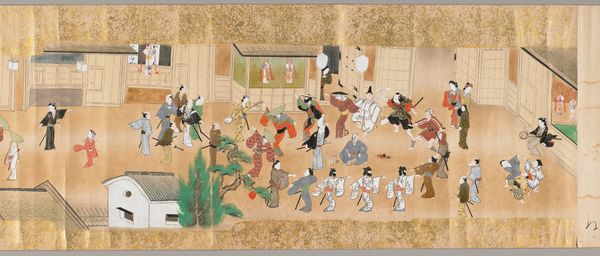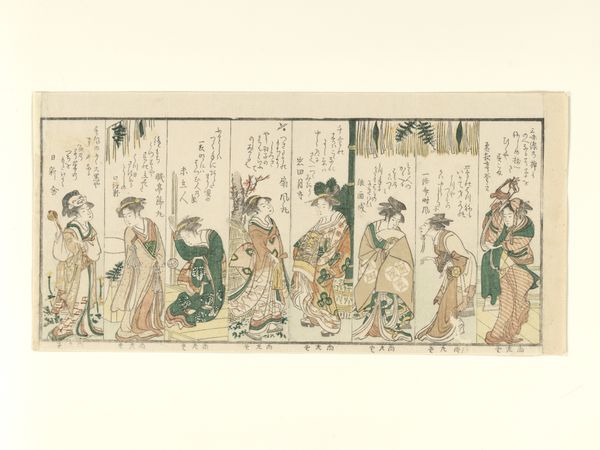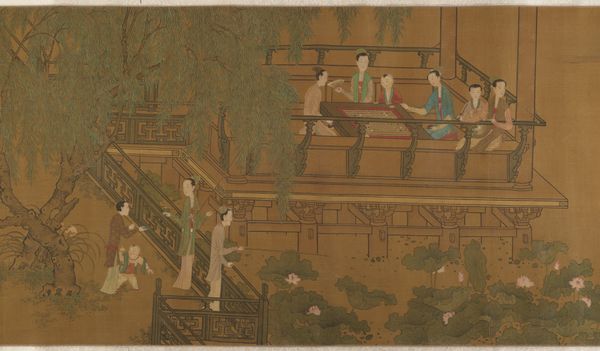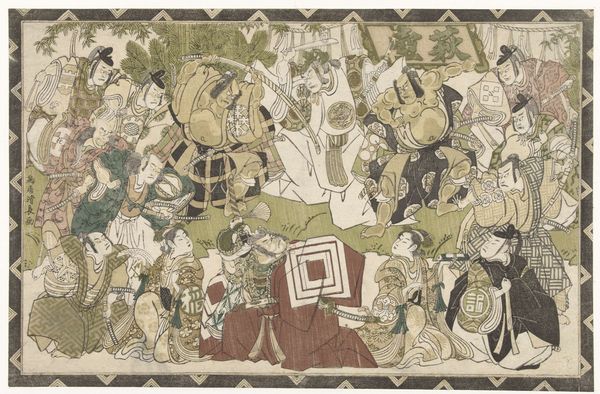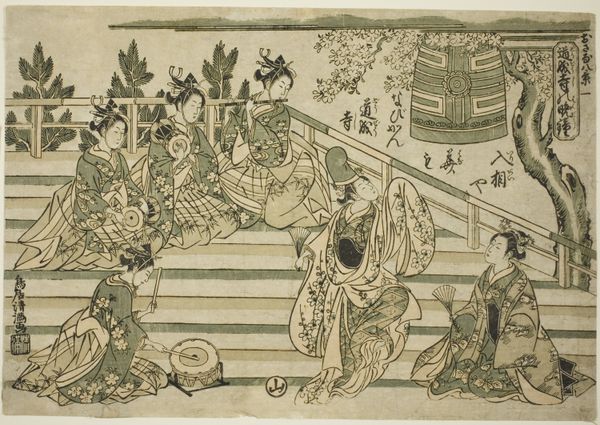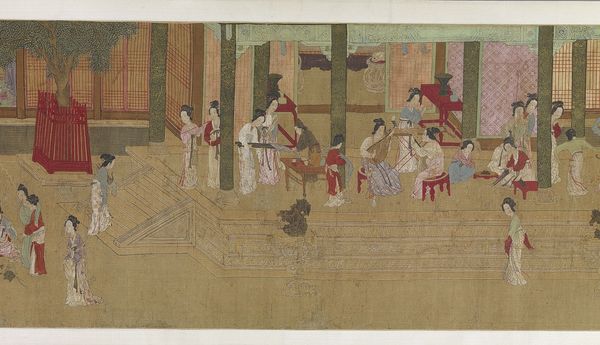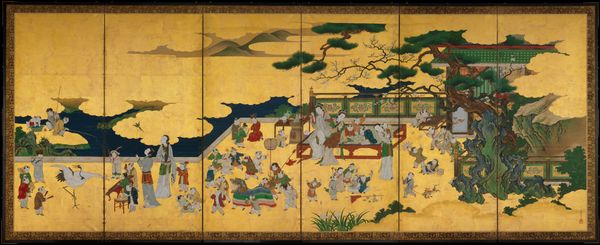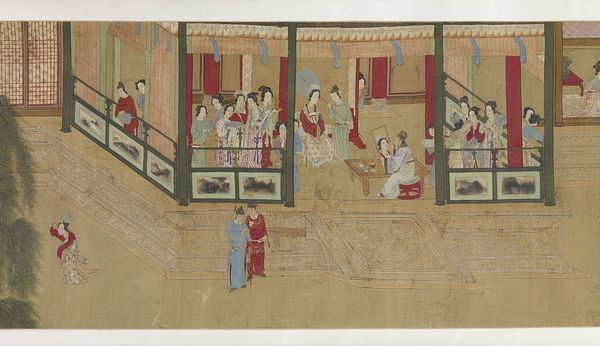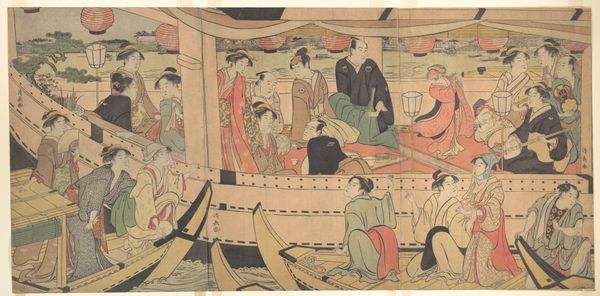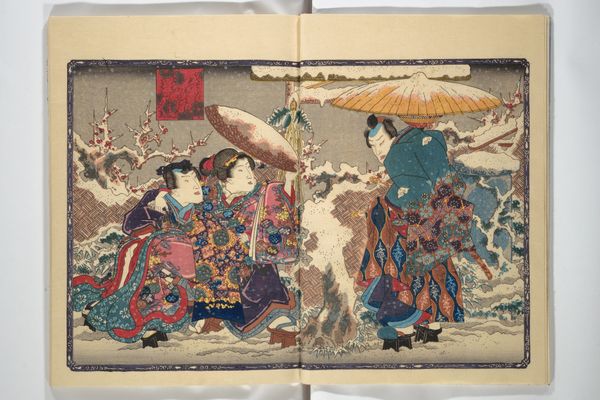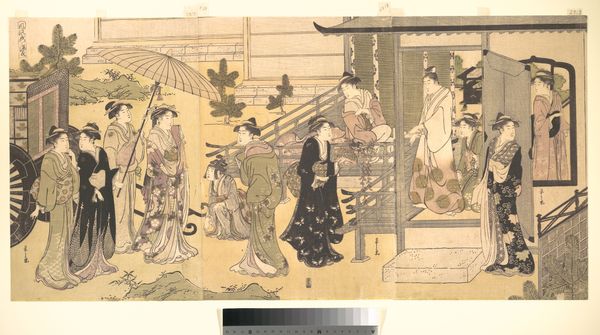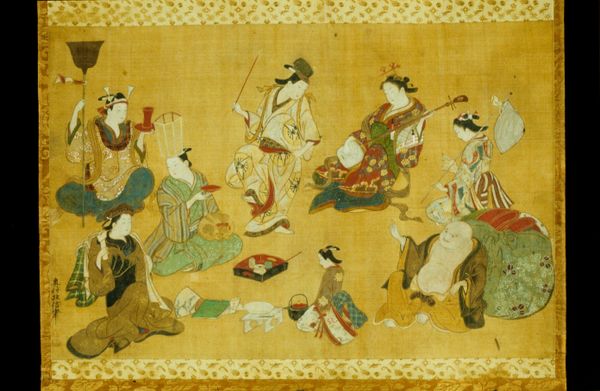
painting, watercolor
#
water colours
#
painting
#
asian-art
#
ukiyo-e
#
figuration
#
watercolor
#
child
#
men
#
genre-painting
Dimensions: Image: 15 1/2 × 27 5/16 in. (39.4 × 69.3 cm) Overall with mounting: 51 15/16 × 32 5/16 in. (132 × 82 cm) Overall with knobs: 51 15/16 × 34 3/4 in. (132 × 88.3 cm)
Copyright: Public Domain
Editor: This watercolor on paper, "Taking Shelter from the Rain" by Teisai Hokuba, created sometime between 1800 and 1844, gives us a glimpse into a bustling scene. I'm immediately struck by the sheer number of people crammed into the space. What draws your attention when you look at this piece? Curator: The materiality of the painting itself interests me most. It’s not just about what’s depicted, but the socioeconomic implications of its creation. Think about the paper: was it locally sourced? What kind of labor was involved in its production? Editor: I hadn’t thought of that. How does the material affect its meaning? Curator: Well, watercolor was accessible. Hokuba is documenting everyday life of ordinary people. Consider who would have commissioned such a work. Likely someone from the merchant class. So we are looking at artwork for and perhaps about common people of Japan. Notice the precise brushstrokes – where do you see the detail concentrated? Editor: Definitely on the faces and the objects they carry – the umbrellas, bundles, that curious-looking instrument. So, by using accessible materials and portraying commoners, Hokuba potentially democratized art, challenging the dominance of art for elites? Curator: Precisely. And it prompts us to consider: how did the consumption of art, its distribution and access, shape societal values in 19th century Japan? Did pieces like this reflect or challenge power structures through their mere existence? Editor: That's a fascinating perspective. I will never be able to see just a pretty picture again! Thanks for making me think so much deeper. Curator: Indeed. Every artistic choice – from the material to the subject matter – tells a story about production, access, and cultural meaning. Thinking through this materialist lens illuminates these underlying dialogues.
Comments
No comments
Be the first to comment and join the conversation on the ultimate creative platform.
